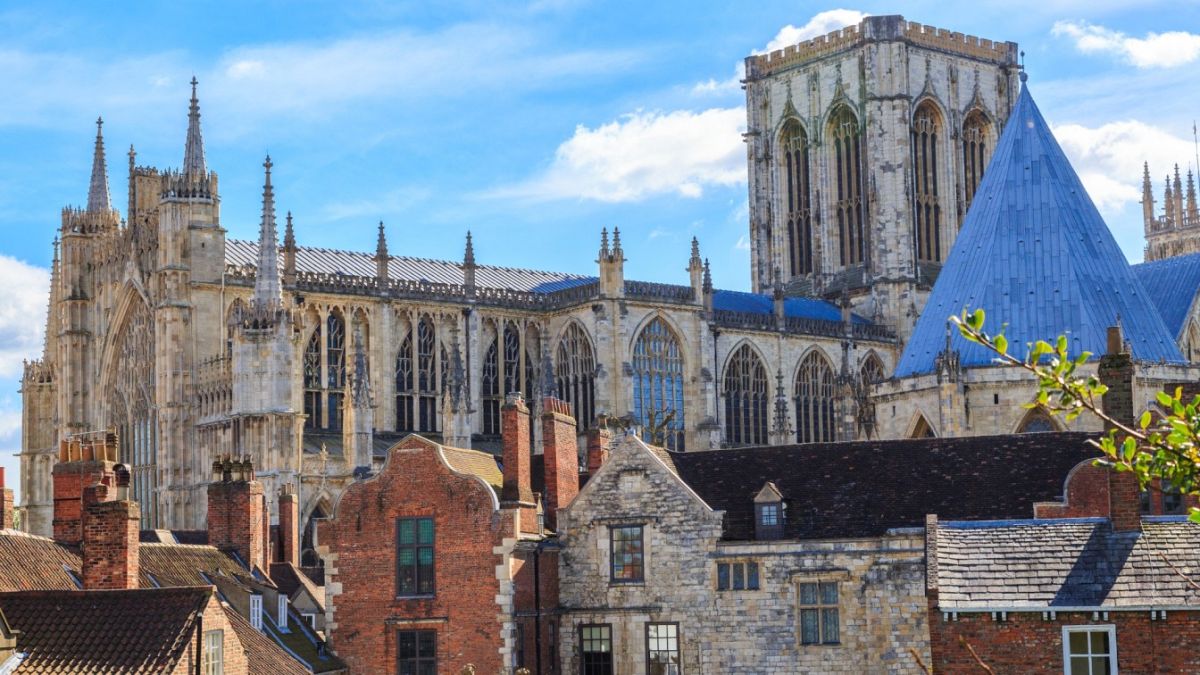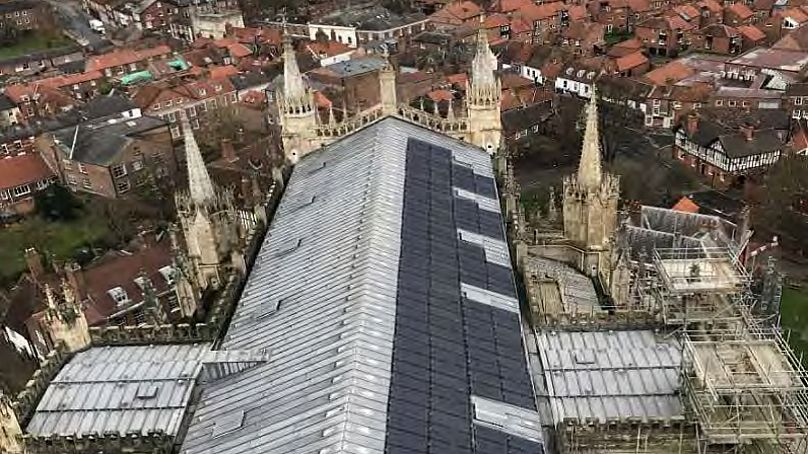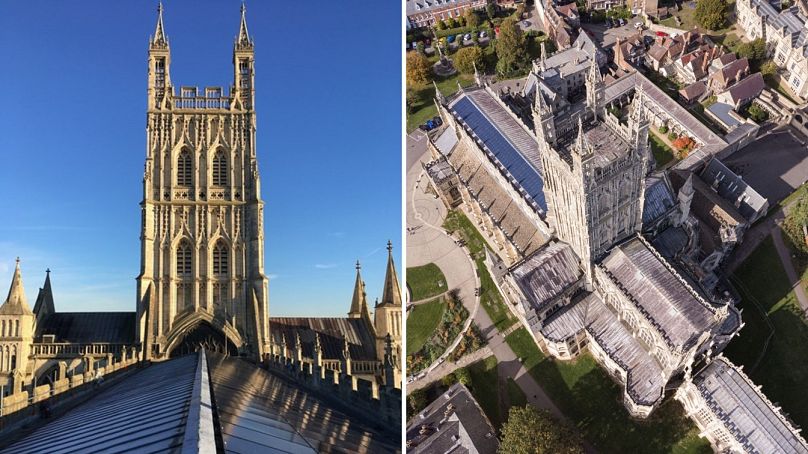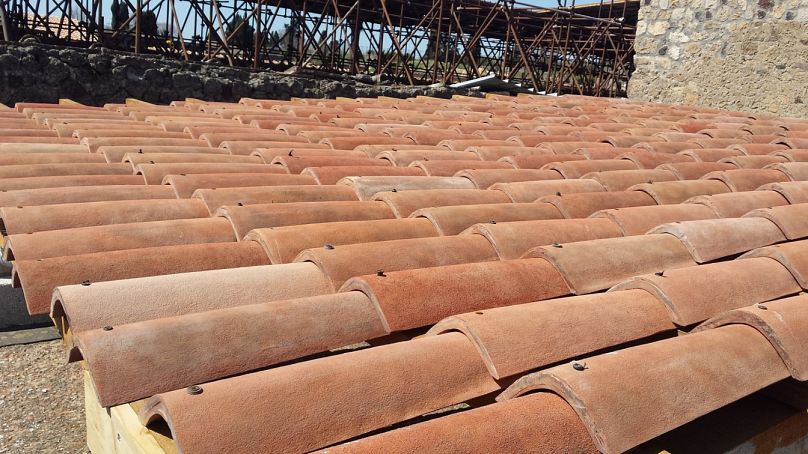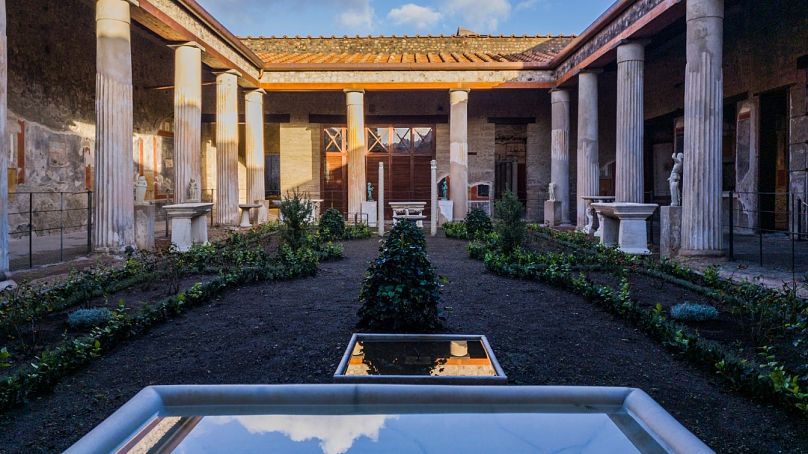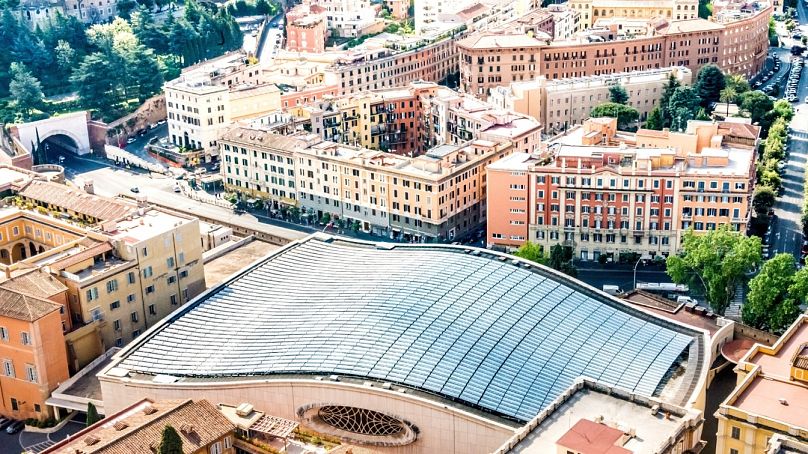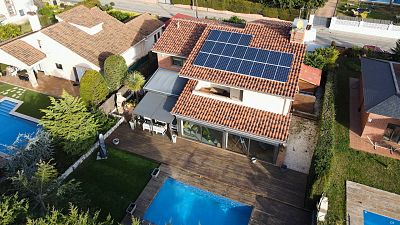Across Europe, historic buildings are balancing heritage and climate action by turning to solar power.
Solar panels will soon be fitted on the roof of York Minster in northern England.
Faced with rising bills and climate concerns, the historic cathedral is turning to renewable energy.
The 199 photovoltaic (PV) tiles, recently approved by the City of York Council, will generate 75,000 KwH of power annually - or enough electricity for around 25 average UK households.
The panels will be discreetly placed on the roof of the South Quire Aisle, which originally dates from 1361. Any surplus energy they generate will be stored in underground batteries and used to power the cathedral’s evening services and events.
The 1,386-year-old gothic-style medieval cathedral sits at the heart of York in the UK. The walled Roman city welcomes over eight million visitors every year.
Which other English cathedrals have installed solar panels?
The decarbonisation of York Minster is part of the Church of England’s vision to reach net zero by 2030.
“Currently, the biggest external threat to the Minster’s future is climate change, brought about by extreme weather events,” says Alex McCallion, the cathedral’s director of works and precinct.
“York Minster is leading the way and setting a new precedent for other heritage organisations to follow.”
Historic England and the Cathedrals Fabric Commission for England were both consulted to “ensure that the panels are sensitive to the Precinct’s historic architecture,” says the Dean of York, the Very Reverend Dominic Barrington.
The tiles are also part of a 15-year plan to make the northern English city more sustainable.
York is not the first cathedral in the UK to install solar panels. It was beaten to the punch by Gloucester Cathedral in 2016 and Salisbury Cathedral in 2020, both of which installed PV tiles as part of the Church of England’s environment programme.
Chester Cathedral also unveiled roof-mounted PV tiles on its Grade I listed South Transept and Nave earlier this year. The panels will supply up to 25 per cent of the building’s energy needs.
Last month, King’s College at the prestigious University of Cambridge was also granted permission to install solar tiles on its chapel roof.
Which other historic sites in Europe have solar panels?
Outside the UK, the ancient city of Pompeii in southern Italy has turned to solar panels as a carbon and cost cutting measure.
Installed earlier this year, the panels are disguised as terracotta tiles that blend in with the Roman ruins left by Mount Vesuvius’s volcanic eruption in 79 CE. The ‘invisible’ tiles provide the electricity needed to light the frescoes in the House of Ceres and the House of Vetti.
Well ahead of the game, the Vatican has been generating solar power since 2008. Panels are installed on the roof of the Paul VI Audience Hall and produce 300,000 kWh of solar energy every year - around enough to power 100 homes.
Germany’s Reichstag Building and government offices conceal around 3,600-metres-squared of solar panels on their roofs. The energy they produce is fed directly into the in-house network.
